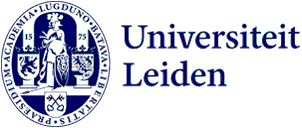
Common insecticide damages freshwater ecosystems
The pesticide thiacloprid turns out to be more harmful than previously thought. It can disrupt the lives of freshwater invertebrates and their communities, upsetting the balance and functioning of entire freshwater ecosystems. This was shown by ecologist Henrik Barmentlo and colleagues, their research appeared in Ecology Letters.
Earlier Henrik Barmentlo and his fellow researchers of the Living Lab in Leiden linked this pesticide to extreme declines in insects. In the experimental ditches of the Living Lab, they experienced that insects such as dragonflies and beetles drastically declined both in abundance as well as biomass. Now they show that not only insects, but even whole communities are affected at concentrations that were deemed safe for aquatic life.

Environmental norms do not protect aquatic life
‘Our test concentrations included the environmental norms set by EFSA and the EPA at which aquatic life should be protected, this turned out not to be the case’ says Barmentlo.
To come to these conclusions, the authors exposed 27 experimental ditches to a concentration of thiacloprid (versus 9 control ditches). Thiacloprid belongs to the group of ‘neonicotinoid’ insecticides which are meant to target ‘pest’ insects such as aphids and fleas.
Hereafter, they measured as much in the ditch ecosystems as they could, Barmentlo, ecologist at the Institute of Evironmental Science (CML): ‘We measured invertebrate diversity, plants, phytoplankton, floating algal beds, decomposition and invertebrate consumption and various other water quality parameters.’
‘Our ecosystems were in a perilous state after exposure to the pesticide’
Thick mats of floating algae
‘Our ecosystems were in a perilous state after exposure to the pesticide’, Barmentlo continues. Invertebrate consumption and phytoplankton abundances declined strongly, while the ditches became covered with thick mats of floating algae that blocked sunlight (Figure 2). Even months after the experiment, the researchers still observed these algal beds covering the ditches.
Although the European Union restricted the use thiacloprid in 2020, emergency exemptions still allow the use of neonicotinoids in certain cases, meaning the threat to freshwater ecosystems persists. Moreover, in most parts of the world neonicotinoids are still widely used.
Stricter regulations needed
The authors advocate for stricter regulations on neonicotinoids and improved monitoring methods like the applied network models to detect damage to species communities. Barmentlo: ‘By refining how we assess environmental threats using new techniques at the ecosystem level, we can make more informed decisions to protect biodiversity, water quality, and the overall health of our ecosystems.’
